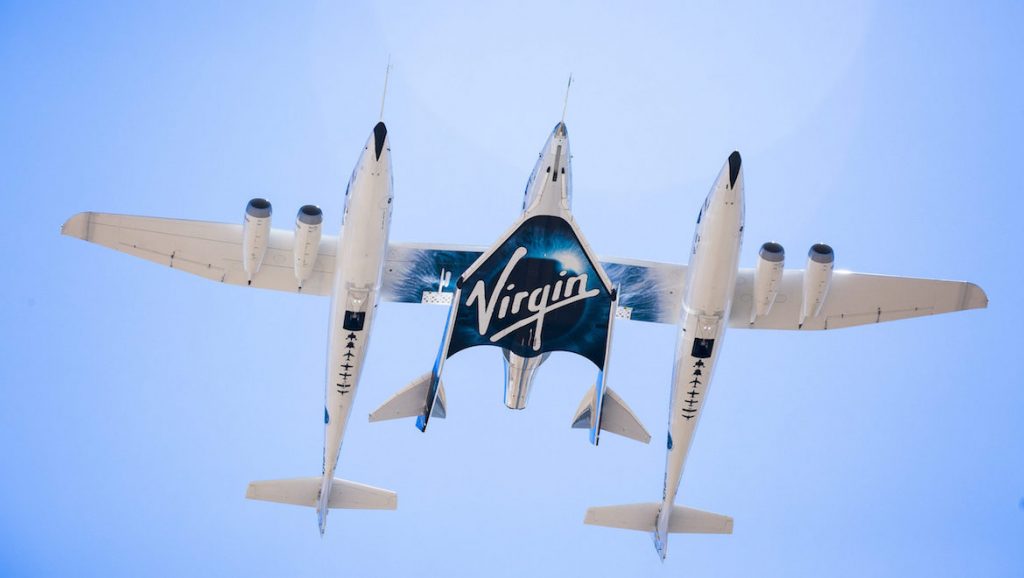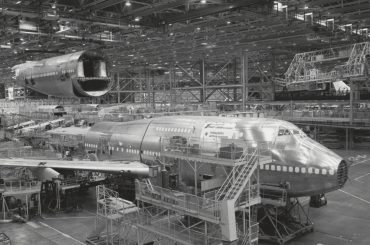
Virgin Galactic is preparing to finally perform the third crewed test of its VSS Unity spaceplane into suborbital space on Saturday, 22 May, following an earlier false start in December.
Sir Richard Branson’s space tourism company will complete the third flight test of its SpaceShipTwo Unity spaceplane on Saturday, pending weather and final technical checks.
According to Virgin Galactic, the flight test will assess the spaceplane’s recently-upgraded horizontal stabilisers, as well as the flight controls during the boost phase of the flight.
The test will also be used to evaluate elements of the customer flight cabin, and test the live stream capability from the spaceship to the ground.
The upcoming VSS Unity test flight will be crewed by two pilots and will carry research payloads as part of the NASA Flight Opportunities program.
Further, the company has already completed a thorough maintenance review of VMS Eve, the mothership jet aircraft that carries VSS Unity to an altitude of approximately 50,000.
VMS Eve has now been cleared for flight, after a post-flight inspection in early May called for additional engineering analysis to assess a previously-known maintenance item in her tail.
“Following a detailed inspection and thorough analysis of our mothership, Eve, we have cleared our Spaceflight System for our upcoming flight,” said Michael Colglazier, chief executive of Virgin Galactic.
“I want to thank our incredibly talented team of engineers, maintenance crew, quality inspectors and support staff for their diligence and hard work, which is testament to our commitment to safety and the integrity of our flight test program.”
Virgin Galactic had originally planned to perform its third test flight in December, however the test was abandoned partway through, before Unity reached space, due to a malfunction in Unity’s onboard computer that halted ignition of the rocket motor.
As such, Saturday’s test will attempt to complete the same objectives as the previously planned flight test.
Following a successful launch on Saturday, the company will reportedly complete an extensive data review, which will inform the next steps in the test flight program.
The company is aiming to fly its first paying customers into suborbital space for the first time next year.
VSS Unity is Virgin Galactic’s latest SpaceShipTwo vehicle; a six-passenger, two-pilot craft that is designed to make brief jaunts to suborbital space.
SpaceShipTwo takes off from a runway beneath the wing of a carrier plane called WhiteKnightTwo – in this case, named VMS Eve.
WhiteKnightTwo carries the spaceplane to an altitude of about 50,000 feet, where SpaceShipTwo drops free and makes its own way to suborbital space.
To date, Unity has reached space twice, on two previous test flights conducted in December 2018 and February 2019.
Both previous missions took off from ports in California, close by to the HQ of Virgin Galactic’s manufacturing subsidiary, The Spaceship Company.
The first attempt at the third spaceflight was the first that Unity made from Spaceport America, in New Mexico, the current hub of the company’s commercial operations, and the intended destination for wealthy thrill-seekers to eventually board one of Virgin Galactic’s rocket-powered plans for a quick trip to the edge of space.
According to Virgin Galactic, about 600 people have already bought their ticket to ride SpaceShipTwo when it is in full operation, each paying around $250,000 for the privilege.
The company paused further ticket sales, however plans to re-open them next year, after Sir Richard takes his seat aboard a VSS Unity test flight.
The company claims a further 400 people have expressed interest in purchasing tickets in the future.
Currently, The Spaceship Company is building two more SpaceShipTwo vehicles, the first of which was expected to be rolled out of the California factory in early 2021.
The company is aiming to obtain its official commercial operating licence from the FAA once fully completing all its necessary test flights.
Meanwhile, rival space tourism company Blue Origin, owned by Amazon billionaire Jeff Bezos, has announced it will perform its first suborbital flight with crew onboard on 20 July this year, and is offering up one spot onboard to the highest bidder.
Following 15 consecutive successful non-crewed test flights, the 20 July flight will mark the first test flight with astronauts on board.
The New Shepard is a rocket-and-capsule combo that flies autonomously into suborbital space, around 100 kilometres above Earth, carrying six passengers onboard.
The spacecraft flies high enough to see the curvature of the Earth, and experience a few minutes of low-gravity weightlessness, according to Blue Origin.
Like Virgin Galactic, Blue Origin is gearing up to offer its first tourist space flights for paying customers in 2022.











